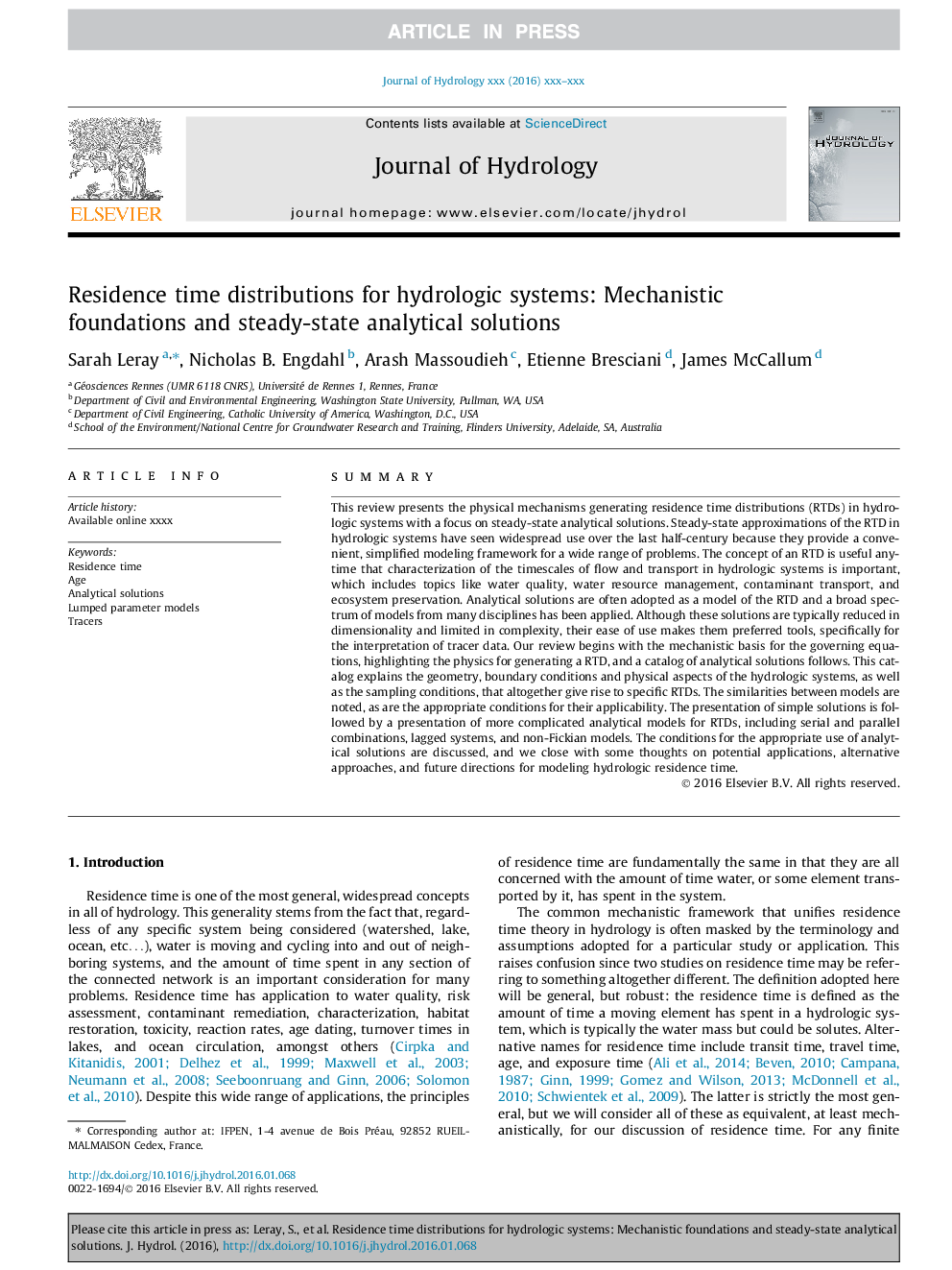| Article ID | Journal | Published Year | Pages | File Type |
|---|---|---|---|---|
| 5770949 | Journal of Hydrology | 2016 | 21 Pages |
Abstract
This review presents the physical mechanisms generating residence time distributions (RTDs) in hydrologic systems with a focus on steady-state analytical solutions. Steady-state approximations of the RTD in hydrologic systems have seen widespread use over the last half-century because they provide a convenient, simplified modeling framework for a wide range of problems. The concept of an RTD is useful anytime that characterization of the timescales of flow and transport in hydrologic systems is important, which includes topics like water quality, water resource management, contaminant transport, and ecosystem preservation. Analytical solutions are often adopted as a model of the RTD and a broad spectrum of models from many disciplines has been applied. Although these solutions are typically reduced in dimensionality and limited in complexity, their ease of use makes them preferred tools, specifically for the interpretation of tracer data. Our review begins with the mechanistic basis for the governing equations, highlighting the physics for generating a RTD, and a catalog of analytical solutions follows. This catalog explains the geometry, boundary conditions and physical aspects of the hydrologic systems, as well as the sampling conditions, that altogether give rise to specific RTDs. The similarities between models are noted, as are the appropriate conditions for their applicability. The presentation of simple solutions is followed by a presentation of more complicated analytical models for RTDs, including serial and parallel combinations, lagged systems, and non-Fickian models. The conditions for the appropriate use of analytical solutions are discussed, and we close with some thoughts on potential applications, alternative approaches, and future directions for modeling hydrologic residence time.
Related Topics
Physical Sciences and Engineering
Earth and Planetary Sciences
Earth-Surface Processes
Authors
Sarah Leray, Nicholas B. Engdahl, Arash Massoudieh, Etienne Bresciani, James McCallum,
